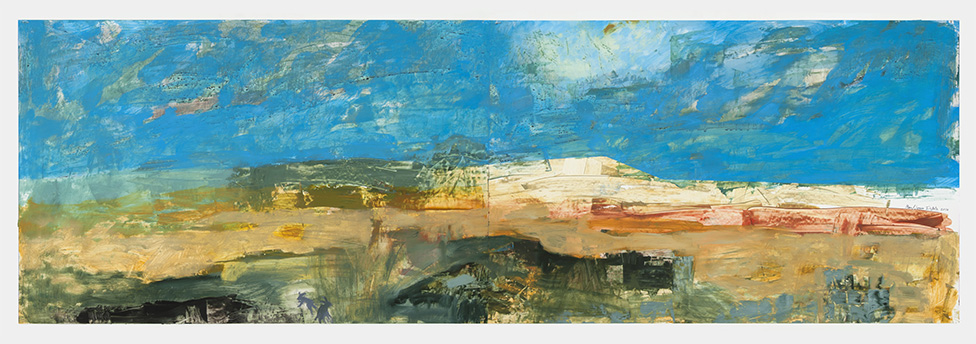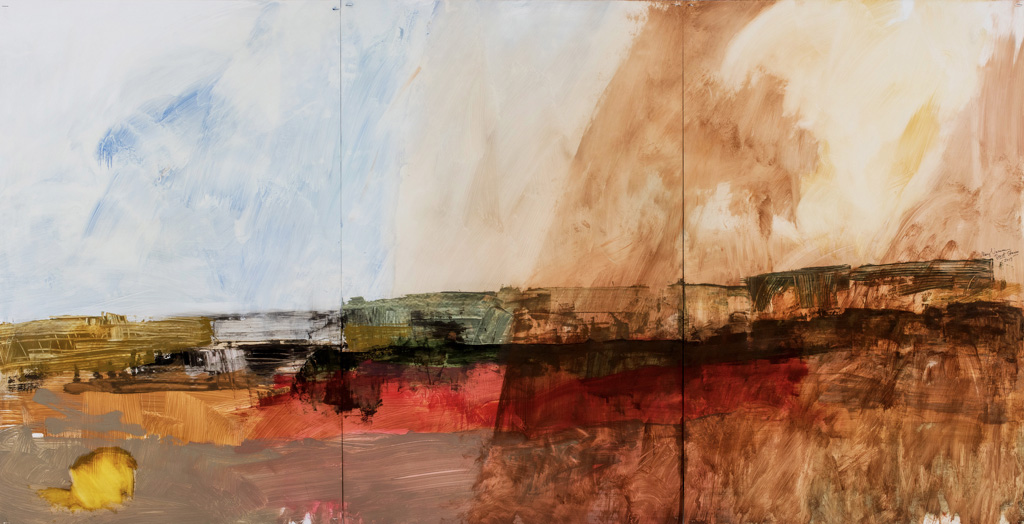
Spill, 2011
Mark Strand was speaking about ideas of poetry. It must have been the late 1990’s. Form, he said, was a great word, of so many meanings, that it could be apparently opposite things. It could mean structure, composition, framework, clarity. It could just as well mean essence. That might be the fundamental inner reality, the enduring, the necessary, the substance. By 2000, Mark Strand had published this statement in “Notes on the Craft of Poetry,” The Weather of Words: Poetic Invention, (New York: Alfred A. Knopf), p. 69. At first, I thought Mark Strand might be, for a moment, remembering what it was like to be an existentialist (talking about physical essence as against the essence of a being).
But, quickly, as it happens when significant things have been said, I understood his concept of form as a concept of unity. I understood it applied to my work. A part of my work has always been organization and analysis. Structures suggested themselves from the placement of objects in rooms, from works of art, and from the tangles of landscape. Underlying any image was a geometric structure. And another part of my work has been that of seeking the ideas, intents, desires, wit, and experience of a place – the genius loci. I have tried to show how the vegetative landscape regards itself. If form, for a poet, could be both structure and essence, it could be so for a painter.
Form in my most recent work includes moments of color navigation, the sort of “second navigation by color” spoken of by Derrida in Truth in Painting. A small work, like Breton Yellow, asserts, I think, a strong, rather weedy, architecture, and then asks the eye to ponder changes in blues – their degrees of saturation, their textures, and their values.
Chevaux-de-frise and Zebra Drive contain similar concerns in red and its possibilities, though Zebra Drive seems impossible to render correctly on browser pages. As to the genius loci in these works, certainly Chevaux-de-frise is the most blatant; it rather repels in the same way that glass shards do on the top of a wall.
Looking back on past work – collage in 1999 and 2000, more geometric painting in 1996 to 2000, more observational landscapes in the early 1990’s – I find images that establish an architecture of the painted surface followed by works that assume that order with more daring and trust. This latter shows itself collages such as Arno and Bisenzio. I think that the best of my students develop an order for their paintings that is entirely personal, deliberate, and resilient enough to flout. That sort of order is one of the things I teach.
I was rather shocked, at age ten, to find that there were jobs for adults that entailed no teaching duties. While I was always some kind of painter, teaching is the invisible inner framework of my life. I assumed that taking up a profession meant teaching it as well. This idea of a separation of teaching into a segregated act seemed risky to me. Certainly the matter, or skill, or discipline or truth had control over the way it could be taught. Rowing a boat takes a different kind of teaching from the playing of poker.
At that age, I found that one could make an adult define a word by asking him or her how it might be taught. Patriotism: how do you teach patriotism? Love of country, defense of it, loyalty to it, how can they be taught? If you say it cannot be taught, but just occurs, you may not know what teaching is. Even at age ten, I would have said patriotism is taught, by every connivance, in every nation. A range of great interests, feelings, and traditions prompt the citizens of a nation to engage in teaching one another patriotism. You might, indeed, give the name Patriotism to the interests, feelings and traditions that teach more patriotism. I was pretty sure that the matter being taught moves the teacher to engage the student in its service. I may have been wrong, but I was pretty sure.
There are two things I see when a student is drawing well (therefore, having learned, to some extent, to draw: attention accumulating over time, and pleasure. A drawing is not a single observation, but hundreds of them, or thousands. That means that the thing drawn and the drawing have moved tog ether in time. This shifting changes both things. And the drawing is a bit of time travel. A drawing is a thing that reveals time, in that the field of the drawing usually remains open so that the delicate shifts show all the way through. The act of accumulating the moments of attention, called drawing, causes, in the person enacting it, an increasing urgency and focus. The moments of making changes and making satisfying physical realities entice the artist to keep on. It is pleasure.
I teach drawing by enlisting the student into the legacy of pleasurably attentive people who make drawings. Drawing itself is likely to enlist the student over a long period; and knowledge of great drawings is an enticement. Rembrandt or Piranesi or Cézanne allow at the same time that they admonish. But the real pleasure can be caught when the student finds a personal need to get something just as he/she wants it, just as it ought to be, over time. To get to this, the student must adopt a discipline (the right materials, the right light, the right stance, and the isolation of thought). The student must belong to the work of drawing. The teacher encourages the discipline until it is natural. When the discipline is easy, then the work may be real and interesting. When the work is interesting, the teacher says so and says why. The teacher brings the student’s work back to the realm of great drawings, and questions it there. The teacher is the first one to make the assumption that the work must be in the realm of real drawings. To keep one’s work in that realm is to work pleasurably over time, to work with great drawings and against them. In the realm of real drawings, time reveals itself, and the finest things may be noticed.








